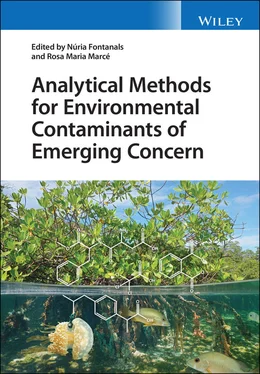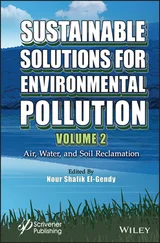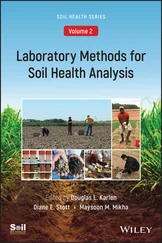13 8 Musk Fragrances 8.1 Overview of Musk Fragrances 8.1.1 Properties 8.1.2 Legislation 8.1.3 Reported or Potential Metabolites and/or Transformation Products 8.1.4 Occurrence in the Environment 8.1.4.1 Occurrence in Wastewater and Sewage Sludge 8.1.4.2 Occurrence in Surface Water, Soils, Sediments and Air 8.1.4.3 Occurrence in Biota 8.2 Sample Preparation and Collection 8.2.1 Protocols for Collecting and Preparing Samples 8.2.1.1 Air Samples 8.2.1.2 Water Samples 8.2.1.3 Sludge, Soil and Sediment Samples 8.2.1.4 Biota 8.2.2 Sample Extraction and Clean-up8.2.2.1 Air Samples 8.2.2.2 Water Samples 8.2.2.3 Sludge, Soil and Sediment Samples 8.2.2.4 Biota 8.3 Determination of Musk Fragrances8.3.1 Chromatography 8.3.2 Detection 8.4 Future Directions and Challenges References
14 9 Disinfection Byproducts in Water 9.1 Overview of Main DBP Classes 9.1.1 Properties 9.1.2 Legislation 9.1.3 Potential Metabolites and/or Transformation Products 9.1.4 Occurrence in the Environment 9.2 Sample Preparation and Collection9.2.1 Protocols for Collecting and Preparing Samples 9.2.2 Sample Extraction and Clean-up 9.3 Determination of DBPs 9.3.1 Development of the Instrumental Method9.3.1.1 Chromatography 9.3.1.2 Detection 9.3.2 Figures of Merit9.3.2.1 Linearity 9.3.2.2 Precision and Accuracy 9.3.2.3 Sensitivity 9.3.3 Hints and Tips 9.4 Future Directions and Challenges Acknowledgements References
15 10 Microplastics 10.1 Overview of Micro- and Nanoplastics10.1.1 Properties 10.1.2 Legislation 10.1.3 Origin and Distribution 10.1.4 Occurrence in the Environment 10.1.4.1 Water Systems 10.1.4.2 Sediments 10.1.4.3 Biota 10.2 Sample Preparation and Collection10.2.1 Protocols for Collecting and Preparing Samples 10.2.1.1 Water 10.2.1.2 Sediment 10.2.1.3 Biota 10.2.2 Sample Extraction and Clean-up 10.2.2.1 Separation 10.2.2.2 Matrix Removal by Digestion 10.3 Determination of MNPLs 10.3.1 Physical Characterization 10.3.2 Chemical Characterization 10.4 Future Directions and Challenges Acknowledgments References
16 Index
17 End User License Agreement
1 Chapter 1 Figure 1.1Forty-five TPs originating from... Figure 1.2Metabolite behavior according to the... Figure 1.3Neonicotinoid insecticides in the environment... Figure 1.4Pesticide families detected in (A... Figure 1.5Chromatograms of the targeted pesticides...
2 Chapter 2 Figure 2.1Selected properties of pharmaceuticals.
3 Chapter 3 Figure 3.1Pathways of personal care products...
4 Chapter 4 Figure 4.1Number of NPS reported to...
5 Chapter 6 Figure 6.1Biotransformation pathway of FTOH-based... Figure 6.2Occurrence of PFASs in the... Figure 6.3Collision-induced dissociation (CID) mass... Figure 6.4Negative-ion APPI mass spectra... Figure 6.5Smartphone app-based sensor for...
6 Chapter 7 Figure 7.1General chemical structure of some... Figure 7.2Phthalate metabolites pathway (A); structure...
7 Chapter 9 Figure 9.1The redox states of halobenzoquinones.
8 Chapter 10 Figure 10.1Scheme of the most commonly...
1 Chapter 1 Table 1.1Overview of analytical methods... Table 1.2Overview of analytical methods... Table 1.3Overview of analytical methods... Table 1.4Overview of analytical methods...
2 Chapter 2 Table 2.1Pharmaceuticals and their selected... Table 2.2Exemplary extraction/clean-up... Table 2.3GC/MS application for... Table 2.4LC/MS application for...
3 Chapter 3 Table 3.1Analytical methods for UV... Table 3.2Analytical methods for preservatives... Table 3.3Analytical methods for plasticizers... Table 3.4Analytical methods for fragrance...
4 Chapter 4 Table 4.1NPS categories present in... Table 4.2Summary of different analytical... Table 4.3Analytical methods used for...
5 Chapter 5 Table 5.1Structure and physicochemical properties... Table 5.2NORMAN lowest PNECs for... Table 5.3Occurrence data of ASs... Table 5.4Most frequently used SPE... Table 5.5Stationary and mobile phases... Table 5.6MRM transitions of AS... Table 5.7Figures of merit of...
6 Chapter 6 Table 6.1List of poly- and... Table 6.2Characteristics of poly- and...
7 Chapter 7 Table 7.1Examples of HPVCs and... Table 7.2Overview of analytical methods... Table 7.3Analytical methods to determine... Table 7.4Analytical methods to determine... Table 7.5Overview of analytical methods... Table 7.6Overview of analytical methods...
8 Chapter 8 Table 8.1Classification and physicochemical properties... Table 8.2Overview of analytical methods... Table 8.3Overview of analytical methods...
9 Chapter 9 Table 9.1Main physical-chemical properties... Table 9.2Main physical-chemical properties... Table 9.3Main physical-chemical properties... Table 9.4Main physical-chemical properties... Table 9.5Main physical-chemical properties... Table 9.6Main physical-chemical properties... Table 9.7Main physical-chemical properties... Table 9.8Main physical-chemical properties... Table 9.9Parametric (*) and guideline values... Table 9.10Parametric (*) and guideline values... Table 9.11Columns and conditions used... Table 9.12Columns and conditions used... Table 9.13Columns and conditions for... Table 9.14Columns and conditions used... Table 9.15Limit of detection of...
10 Chapter 10 Table 10.1Average items detected in...
1 Cover
2 Title page Analytical Methods for Environmental Contaminants of Emerging Concern Edited byNúria Fontanals and Rosa Maria MarcéUniversitat Rovira i Virgili, Spain
3 Copyright
4 Contributors
5 Preface
6 Table of Contents
7 Begin Reading
8 Index
9 End User License Agreement
1 i
2 ii
3 iii
4 iv
5 v
6 vi
7 vii
8 viii
9 ix
10 x
11 xi
12 xii
13 xiii
14 xiv
15 xv
16 xvi
17 xvii
18 1
19 2
20 3
21 4
22 5
23 6
24 7
25 8
26 9
27 10
28 11
29 12
30 13
31 14
32 15
33 16
34 17
35 18
36 19
37 20
38 21
39 22
40 23
41 24
42 25
43 26
44 27
45 28
46 29
47 30
48 31
49 32
50 33
51 34
52 35
53 36
54 37
55 38
56 39
57 40
58 41
59 42
60 43
61 44
62 45
63 46
64 47
65 48
66 49
67 50
68 51
69 52
70 53
71 54
72 55
73 56
74 57
75 58
76 59
77 60
78 61
79 62
80 63
81 64
82 65
83 66
84 67
85 68
86 69
87 70
88 71
Читать дальше












